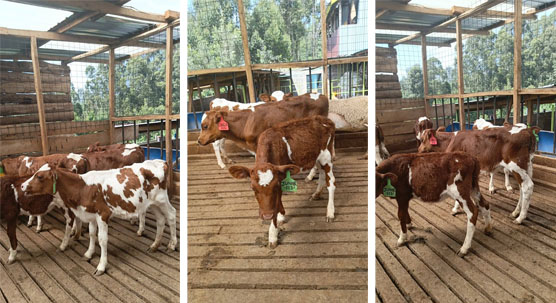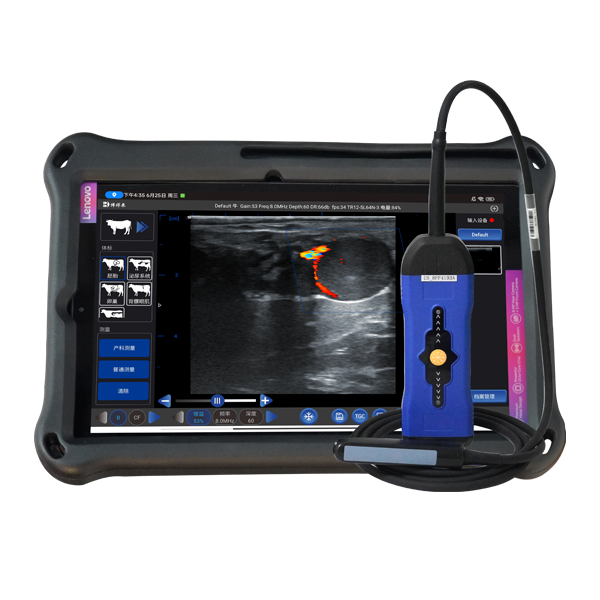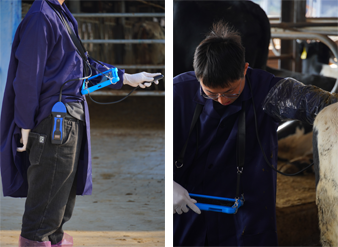As dairy farming becomes increasingly data-driven and technology-enhanced, veterinary ultrasonography has taken center stage in managing reproduction. Among the most significant advances is the use of ultrasonographic guidance for transvaginal follicular aspiration and fetal membrane puncture in dairy cows. These two procedures — though technically different — share a reliance on precision, visualization, and operator training, all made possible by modern ultrasonic imaging systems. When performed properly, these techniques can substantially improve genetic selection, reproductive performance, and herd productivity, making them invaluable to veterinarians and progressive dairy producers worldwide.

Understanding Follicular Aspiration in Dairy Cows
Follicular aspiration, also known as ovum pick-up (OPU), refers to the process of collecting oocytes (egg cells) directly from ovarian follicles using a fine needle guided by ultrasonography. This is commonly done transvaginally, where the probe and aspiration needle are inserted through the vagina while the rectal hand stabilizes the ovary.
This technique is used in both research and commercial embryo production. Oocytes retrieved via OPU can be fertilized in vitro (IVF) and transferred into recipient cows. This allows for the multiplication of genetically superior cows and the accelerated dissemination of elite genetics.
Foreign Perspective: Efficiency and Ethics
In countries like the Netherlands, United States, and Brazil, OPU is considered a standard part of advanced reproductive programs. According to studies published in Theriogenology and Reproduction in Domestic Animals, weekly or bi-weekly OPU in young heifers does not negatively impact subsequent superovulation, embryo recovery, or natural estrus. In fact, Brazilian researchers reported oocyte recovery rates of 50–60% per session when using B-mode ultrasonography.
Veterinarians stress that the success of follicular aspiration depends on equipment quality, operator experience, and animal handling. To minimize stress and ensure accuracy, cows are often restrained in squeeze chutes, and the procedure is performed by trained technicians under strict hygienic conditions.
Ultrasound Imaging: Visualizing the Follicle
B-mode ultrasound, which creates real-time two-dimensional images, is the most widely used mode in follicular aspiration. It allows the practitioner to identify antral follicles—those fluid-filled follicles 2–8 mm in diameter—from which oocytes can be aspirated.
The Veterinary ultrasound probe is typically fitted with a needle guide. Once the probe is inserted into the vaginal fornix and directed toward the ovary, the operator punctures the follicular wall and aspirates the follicular fluid, which contains the oocyte.
Applications Beyond Embryo Collection
Besides oocyte collection, follicular fluid can also be used for hormone analysis. Researchers worldwide utilize this fluid to study concentrations of estradiol, progesterone, inhibin, and IGF-1. Such studies have improved our understanding of follicular dynamics, luteinization, and reproductive disorders such as cystic ovarian disease.
Fetal Membrane Puncture: An Advanced Diagnostic Tool
Beyond the ovary, veterinary ultrasonography also enables access to the fetal environment—specifically the amniotic and allantoic sacs. Transvaginal or transrectal puncture of these sacs allows veterinarians and researchers to collect fetal fluids such as amniotic fluid and allantoic fluid.
Why Collect Fetal Fluids?
Fetal membrane puncture serves several purposes in veterinary medicine and animal science:
Fetal sex determination: By collecting fetal cells from amniotic fluid, cytogenetic or molecular analysis can reveal the fetus’s sex.
Prenatal diagnosis: Detection of fetal anomalies, infections, or developmental issues.
Biochemical profiling: Monitoring changes in glucose, protein, electrolytes, or hormones in fetal fluids provides insight into fetal health and development.
A study from the University of Guelph in Canada confirmed that fetal fluid sampling via ultrasound-guided puncture provided accurate information about fetal sex in cattle between 55–70 days of gestation. Similarly, German researchers explored fetal fluid cortisol concentrations as an indicator of prenatal stress.
Technical Procedure: How It’s Done
The procedure typically uses an ultrasound probe with a needle guide that holds a fine needle or catheter. Under ultrasonographic visualization, the needle is directed into the fetal membrane—usually the amniotic sac—via the vaginal or rectal route. Once inside, fluid is aspirated using gentle suction.
In most cases, the operator stabilizes the uterus rectally while guiding the needle through the vaginal wall into the amniotic cavity. This approach minimizes damage and improves targeting accuracy. However, it requires excellent hand-eye coordination and anatomical knowledge.
Challenges and Limitations
Despite its promise, fetal fluid puncture remains a challenging and potentially risky procedure. If performed improperly, it may lead to infection, fetal injury, or pregnancy loss. Therefore, in developed countries such as Germany and Australia, this procedure is typically restricted to trained veterinarians under controlled environments.
To reduce risk, several innovations have been suggested:
Use of disposable sterile needles or cannulas
Design of blunt-tipped needle guides to minimize tissue trauma
Application of antibiotics or antiseptics post-procedure
Operator training using reproductive simulators or non-pregnant animals
Technological Advances: Making the Procedure Safer and Smarter
Recent improvements in veterinary ultrasound devices have enhanced the feasibility and safety of both follicular and fetal membrane punctures. High-resolution imaging, color Doppler (to avoid blood vessels), and 3D ultrasonography allow for better visualization and planning.
In some advanced clinics in North America and Europe, software-integrated probes record procedure footage, measure puncture angles, and guide the needle in real-time. This reduces operator error and makes training more standardized.
Ethical and Regulatory Considerations
From an international perspective, ethical concerns surround invasive reproductive techniques in livestock. In the EU, for example, all procedures involving fetal puncture must be approved by animal ethics committees and justified by scientific merit. Animal welfare guidelines recommend that discomfort be minimized and recovery monitored.
Nonetheless, when used properly, ultrasonographic-guided punctures can actually reduce the need for more invasive surgeries or euthanasia by offering early diagnosis and therapeutic options.
Why Ultrasonography Matters on the Modern Dairy Farm
For producers, the ability to monitor and intervene in reproductive cycles has far-reaching implications. With B-mode ultrasound, farmers can:
Select genetically superior embryos
Diagnose reproductive disorders early
Predict fetal sex for market planning
Study pregnancy progression in real-time
Moreover, repeated follicular aspiration in elite donor cows can produce dozens of embryos annually without requiring superovulation each time, thus lowering costs and enhancing efficiency.
Conclusion: A Tool Worth Mastering
Ultrasonography has revolutionized dairy cow reproduction. By enabling real-time, non-invasive visualization, it has opened doors to follicular aspiration and fetal fluid sampling that were once inaccessible or too risky. These procedures, when conducted responsibly, provide tremendous value — from genetics and fertility to diagnostics and animal welfare.
For dairy farmers and reproductive veterinarians worldwide, mastering these ultrasonographic-guided techniques offers not just a competitive edge, but also a deeper understanding of bovine reproductive physiology and how to optimize it.









